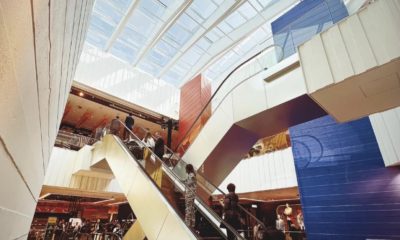AS RETAILERS NURSE their wounds after struggling to survive the economic ravages of the pandemic, it’s incumbent upon them to look introspectively, in an effort to not only promote the wellness of their businesses, but also to promote the wellness of the communities they serve. Wellness is not a luxury or a privilege, but rather a necessity that should be readily and universally attainable. The effects of Covid and our collective response to the hardships that it brought have made it clear that fatigue and anxiety have become debilitating afflictions across the country. With that understanding, every post-pandemic retail design program must include a commitment to environmental constructs that address issues of physical, social and emotional well-being.
While we stare into the face of retail’s new reality, companies must determine how their physical presence impacts the well-being of the community. It’s imperative that they look beyond the store footprint as merely a matter of square footage. They must examine the impact of their physical presence on the neighborhoods where they plant their flag.
Are they a welcomed part of the community and do they embrace the culture of the local demographic? Are customers welcomed into their stores? John Wanamaker, one of the venerable “merchant princes” of the early 20th century said, “Have no impediment for customers entering the store.” In short, the store must be welcoming in a manner that is akin to inviting the customer into your living room.
While people in every socioeconomic group are eager for some semblance of normalcy, or a return to the real world as we once knew it, they are restrained to a large degree by an unnerving uncertainty that can only be ameliorated through trust. Going forward, the cornerstone of all customer relationships will be grounded in good faith.
As retail moves into the post-pandemic age, store design is more important than ever before. Although digital engagement has become an integral component of the customer journey, people are yearning for the physical experience, they want to be out and about, they want to physically kick the tires on everything they’ve researched online.
And though it’s clear we’ve reached a level of digital penetration beyond any reasonable expectation, it is clear that the physical experience will gather steam in the short term while online drops back a bit. This has already begun. As vaccines become more readily available, there will be an insatiable desire to hit retail’s main aisles once again. Going forward, we must seek a healthy balance of the two.
Advertisement
Understanding changing customer behavior is crucial to sustainable retail success. Even though today’s consumer is totally wired and connected, they’re ready to spread their wings in environments that promote wellness. Use this to your advantage. Customers will continue to engage and communicate through multichannel dialogue. Be sure that your physical environment is a healthy one. Make sure it’s part of the conversation.

 Photo Gallery2 weeks ago
Photo Gallery2 weeks ago
 Headlines6 days ago
Headlines6 days ago
 Headlines2 weeks ago
Headlines2 weeks ago
 Headlines2 weeks ago
Headlines2 weeks ago
 Headlines5 days ago
Headlines5 days ago
 Headlines2 weeks ago
Headlines2 weeks ago
 Headlines4 days ago
Headlines4 days ago
 Designer Dozen1 week ago
Designer Dozen1 week ago


















